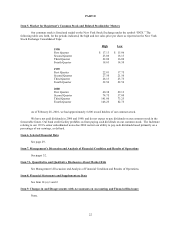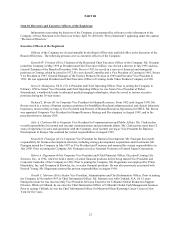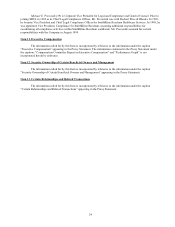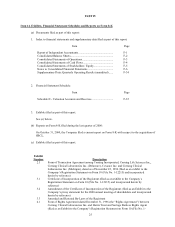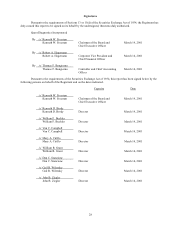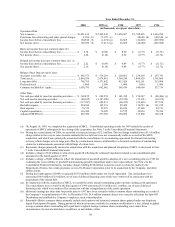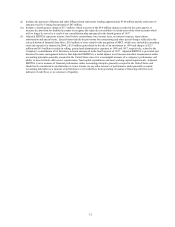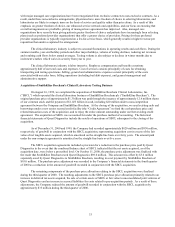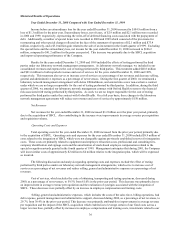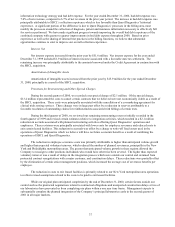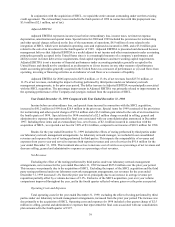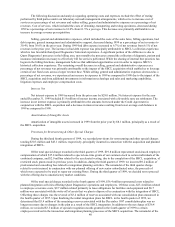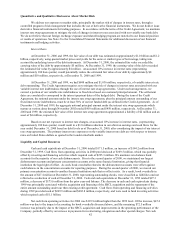Quest Diagnostics 2000 Annual Report Download - page 52
Download and view the complete annual report
Please find page 52 of the 2000 Quest Diagnostics annual report below. You can navigate through the pages in the report by either clicking on the pages listed below, or by using the keyword search tool below to find specific information within the annual report.32
QUEST DIAGNOSTICS INCORPORATED AND SUBSIDIARIES
MANAGEMENT'S DISCUSSION AND ANALYSIS OF FINANCIAL CONDITION AND RESULTS OF
OPERATIONS
Overview
After nearly a decade of pressures to reduce reimbursement and reduce test utilization, the underlying
fundamentals of the diagnostics testing industry are improving. During the early 1990s, the industry was negatively
impacted by significant government regulation and investigations into various billing practices. In addition, the rapid
growth of managed care, as a result of the need to reduce overall healthcare costs, led to revenue and profit declines
within the laboratory testing industry, which in turn led to industry consolidation, particularly among commercial
laboratories. As a result of these dynamics, fewer, but larger commercial laboratories have emerged which have greater
economies of scale, new and rigorous programs designed to assure compliance with government billing regulations and
other laws, and a more disciplined approach to pricing services. These changes have resulted in improved profitability
and a reduced risk of non-compliance with complex government regulations. At the same time, a slowdown in the growth
of managed care and decreasing influence by managed care organizations on the ordering of clinical testing by physicians
has led to renewed growth in testing volumes and further improvements in profitability during 2000. In addition, the
following factors are expected to continue to fuel growth in testing volume to the industry:
• general aging of the U.S. population;
• increasing focus on early detection and prevention as a means to reduce the overall cost of healthcare and
development of more tests for early detection of disease;
• increasing volume of tests for diagnosis and monitoring of infectious diseases;
• research and development in the area of genomics;
• increasing affordability of tests due to advances in technology and cost efficiencies;
• increasing volume of tests as part of employer sponsored comprehensive wellness programs; and
• increasing awareness by consumers of the value of clinical laboratory testing and an increased willingness of
consumers to pay for tests that may not be covered by third party payers.
Quest Diagnostics, as the largest clinical laboratory testing company with a leading position in most of its
geographic markets and service offerings, is well positioned to benefit from the renewed growth expected in the industry.
Payments for clinical laboratory services are made by the government, managed care organizations, insurance
companies, physicians, hospitals, employers and patients. Physicians, hospitals and employers are typically billed on a
fee-for-service basis based on fee schedules which are typically negotiated. Fees billed to patients and insurance
companies are based on the laboratory’s patient fee schedule, which may be subject to limitations on fees imposed by
insurance companies or by physicians negotiating on behalf of their patients. Medicare and Medicaid reimbursements are
based on fee schedules set by governmental authorities. Managed care organizations, which typically contract with a
limited number of clinical laboratories for their members, represent a significant portion of our overall clinical laboratory
testing volume. Larger managed care organizations typically prefer to use large independent clinical laboratories because
they can provide services on a national or regional basis and can manage networks of local or regional laboratories.
While the number of patients participating in managed care plans has slowed in recent years, over the last decade, the
managed care industry has been consolidating, resulting in fewer but larger managed care organizations with significant
bargaining power to negotiate fee arrangements with healthcare providers, including clinical laboratories. Managed care
organizations frequently negotiate capitated payment contracts for a portion of their business, which shift the risk and
cost of testing from the managed care organization to the clinical laboratory. Under these capitated payment contracts, the
Company and managed care organization agree to a predetermined monthly contractual rate for each member of the
managed care plan regardless of the number or cost of services provided by the Company. Capitated agreements with
managed care organizations have historically been priced aggressively, particularly for exclusive or semi-exclusive
arrangements. Recently, there has been a shift in the way major managed care organizations contract with clinical
laboratories. Managed care organizations have begun to offer more freedom of choice to their affiliated physicians,
including greater freedom to determine which laboratory to use and which tests to order. Accordingly, several agreements


